Pius II, born Aeneas Silvius Piccolomini, can be considered a sui generis pope because he did not embark on an ecclesiastical career at a young age, as was usual for the time: in fact, he had his vocation as an adult, already in his 40s, and ascended the papal throne when he was over 50. Before devoting himself to religious life, Aeneas Silvius, who was born in 1405 in the small Sienese village of Corsignano, which belonged to his illustrious family that had long since fallen into decay, embarked on a very active diplomatic career, traveling throughout Europe, particularly to England, Scotland, and Germany, but above all he was a great humanist. He wrote, among his most famous works, the Historia de Eurialo et Lucretia, better known as the History of the Two Lovers: an epistolary novel inspired by the love story involving the imperial chancellor Schlik, a friend and protector of Aeneas Silvius at the Viennese imperial court, recounting this lively passion with a certain licentiousness and sensuality that was considered rather thorny and unsuitable for a man of the time, and especially so, considering that its author would later become pope.
His pre-papal life oscillatedbetween pleasures and passions, owing to his character that was anything but exclusively devoted to devotion; however, unexpectedly, he decided at a mature age to take a significant turn in his existence: he was ordained a priest at the age of forty, became bishop of Trieste and later of Siena, was cardinal in 1456, and after a few years became pope. His choice of name as pontiff fell on Pius both in reference to his predecessor Pius I, but particularly in reference to Virgil and the “pius Aeneas” of theAeneid: a very important reference for him given his strong and innate passion for letters and humanistic culture. Even as pope, his existence was never boring, punctuated by travels; and he never abandoned his greatest passion: in fact, he continued to write, even recounting details of his own life and environment. A clear example of this are his Commentarii, the thirteen books written between 1462 and 1464, the year in which he died, in which he recounts in diary form his life, from his birth to the years of his pontificate, inserting, among the great historical facts of the time, intrigues of court and ecclesiastical environment and personal reflections. It was a biography that differed markedly from those of other pontiffs both because it was written in the first person and because its contents were often far removed from Christian literature and the Holy Scriptures. So much so that the Commentarii were later studied more as an analysis of Italian Renaissance culture.
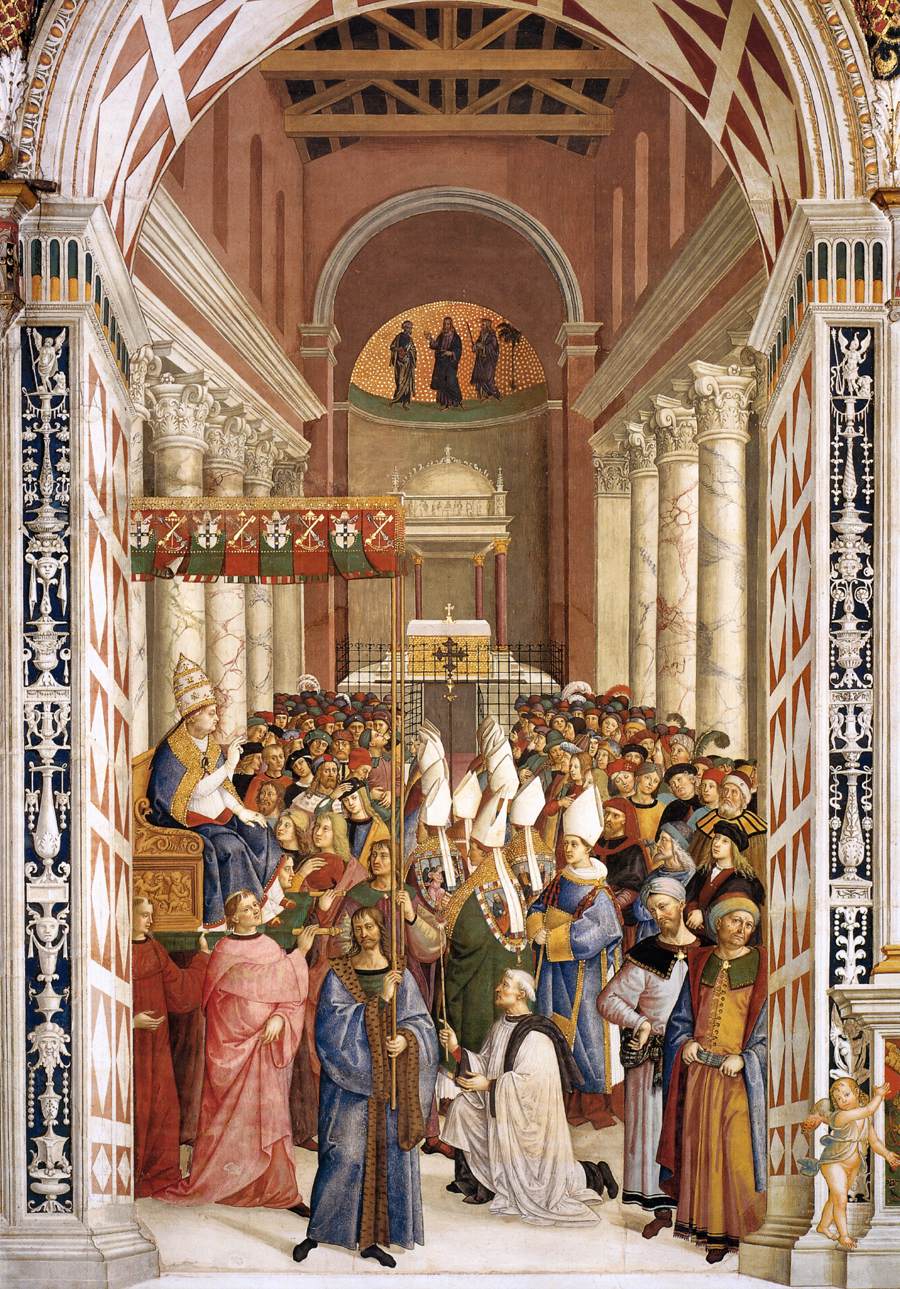
Indeed, Pius II went down in history for being a profound student of the arts and letters, a humanist perfectly placed in the context of the Renaissance, and first and foremost for creating the village of Pienza, which he named after himself. Indeed, his dream was to give life to a true Renaissance city, and he succeeded fully in his intent: Pienza is still considered the ideal city of the 15th century. Ideal because it was born following a pre-established urban plan, which was intended to respect the “rules” of humanistic culture, first of all perspective, taste and elegance, and following the most innovative ideas of Renaissance town planning. And to carry out this ambitious project he chose precisely his hometown, the ancient village of Corsignano: Pienza therefore is nothing but the fruit of the extensive and complex, as well as modern, plan of urban transformation carried out on his native village, respecting, however, the structures of the buildings already present and the ancient road axis, probably on the advice of Leon Battista Alberti, the famous architect and friend of Pius II, although the realization of the project fell to another of the greatest architects of the time, Bernardo Rossellino, who completed it in only three years (from 1459 to 1462). He finally chose to change the name of the city: from Corsignano to Pienza, meaning city of Pius.
If one wanted to map out an itinerary for a walk in the Val d’Orcia, in Sienese territory, in the footsteps of Pius II, the journey would start precisely from Pienza’s main square, Piazza Pio II. Overlooking the square, with a trapezoidal plan and with the pavement divided into large rectangles to better highlight the perspective view, are the cathedral and the bishop’s palace, the latter donated by Pius II to Cardinal Rodrigo Borgia (future Pope Alexander VI), his closest collaborator: known as Borgia Palace, it now houses the Diocesan Museum, which is part of the Fondazione Musei Senesi network. Here are preserved the splendid works of the multifaceted artist Lorenzo di Pietro known as Vecchietta, such as the 1460-1462 altarpiece with the Madonna and Child Enthroned between Saints Blaise, John the Baptist, Nicholas and Florian, complete with lunette depicting theAnnunciation scene and predella with stories depicting the Martyrdom of Saint Blaise, the Crucifixion and the Miracle of Saint Nicholas. The work comes from the church of the grancia of Spedaletto, a fortified complex a few kilometers from Pienza: in fact, the altarpiece was commissioned from the artist on the occasion of the church’s consecration in 1462.
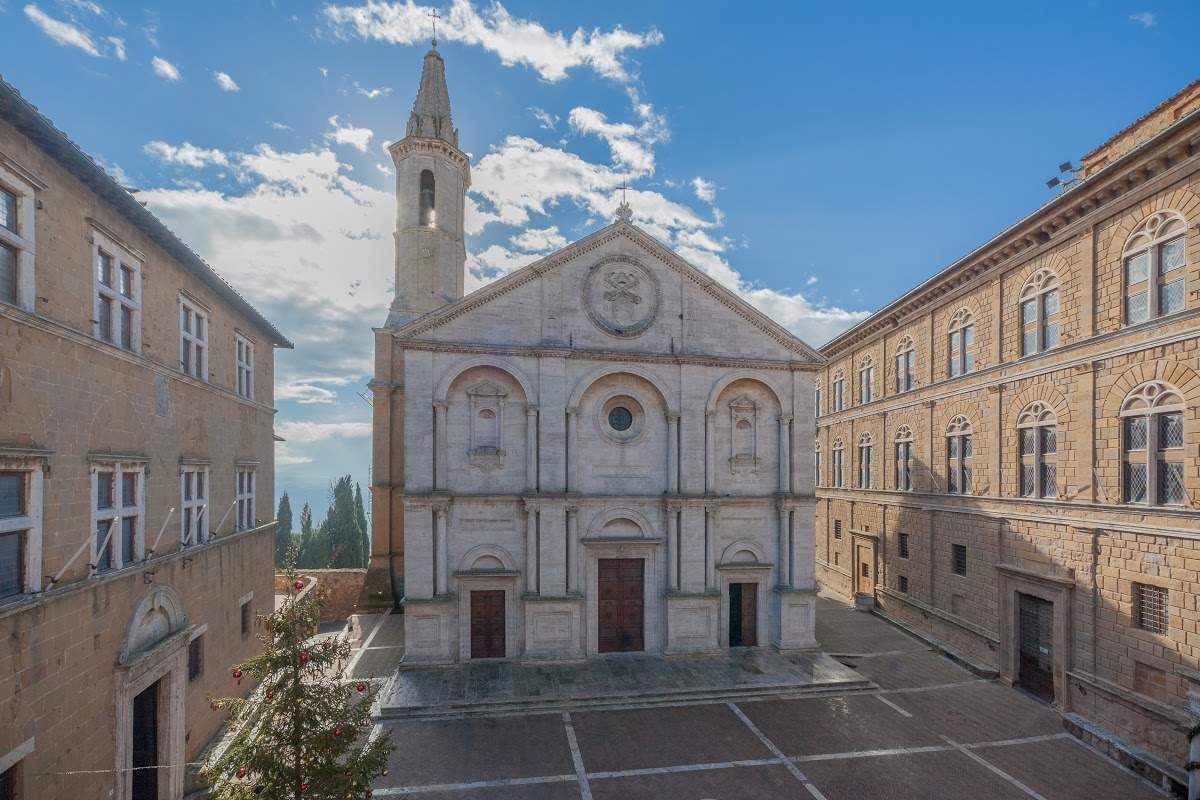
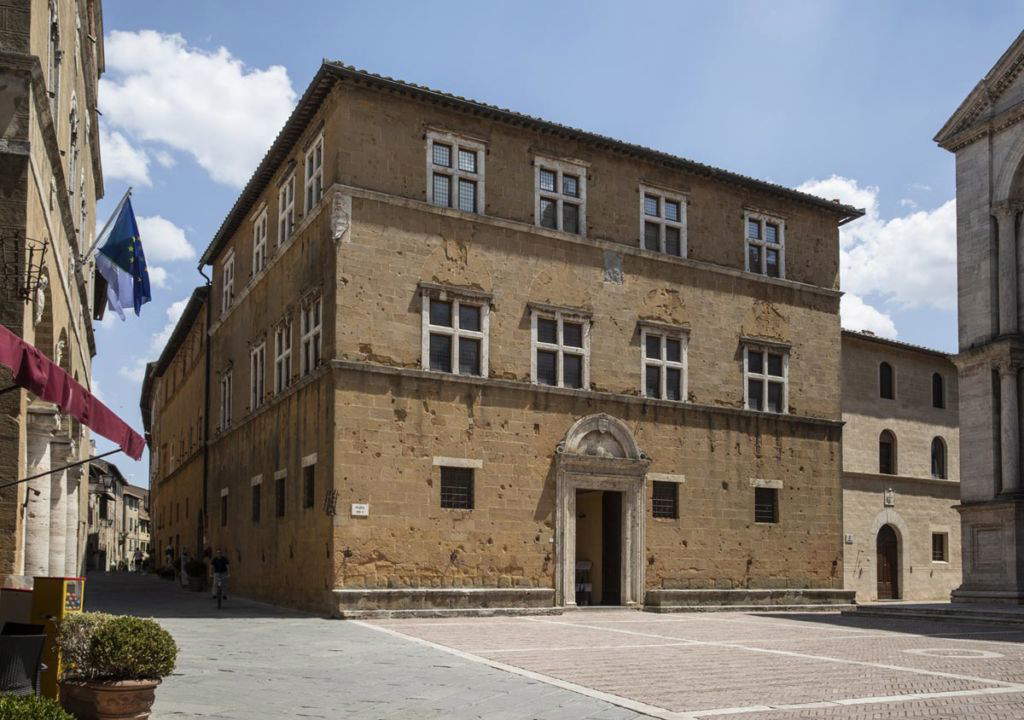
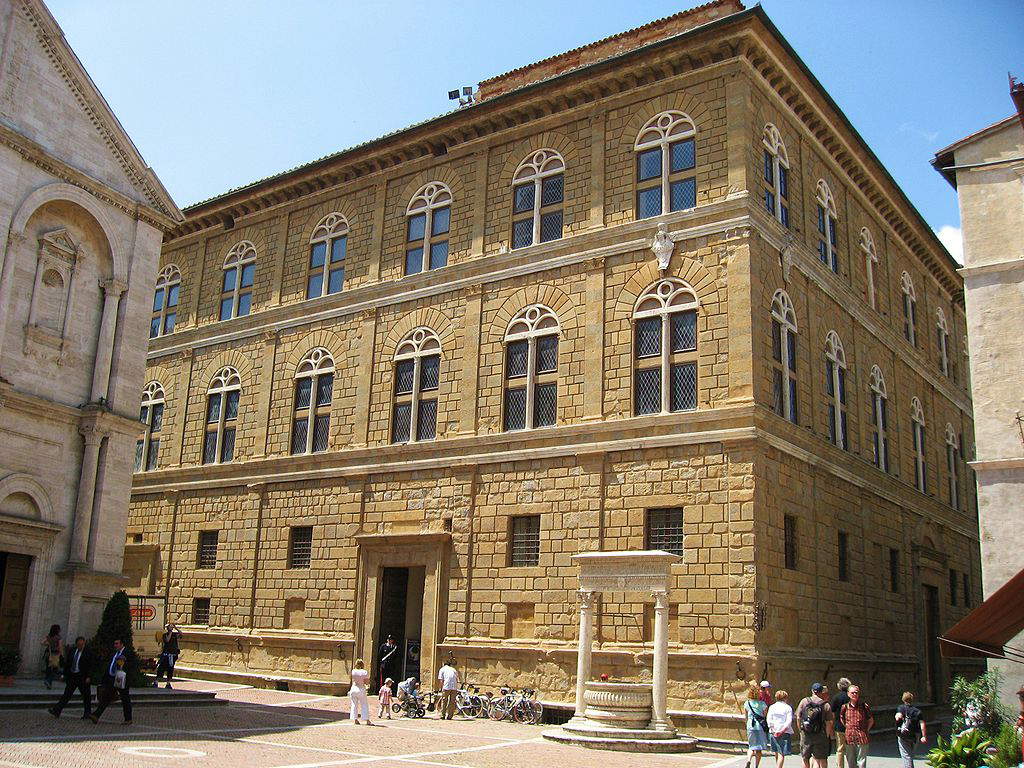
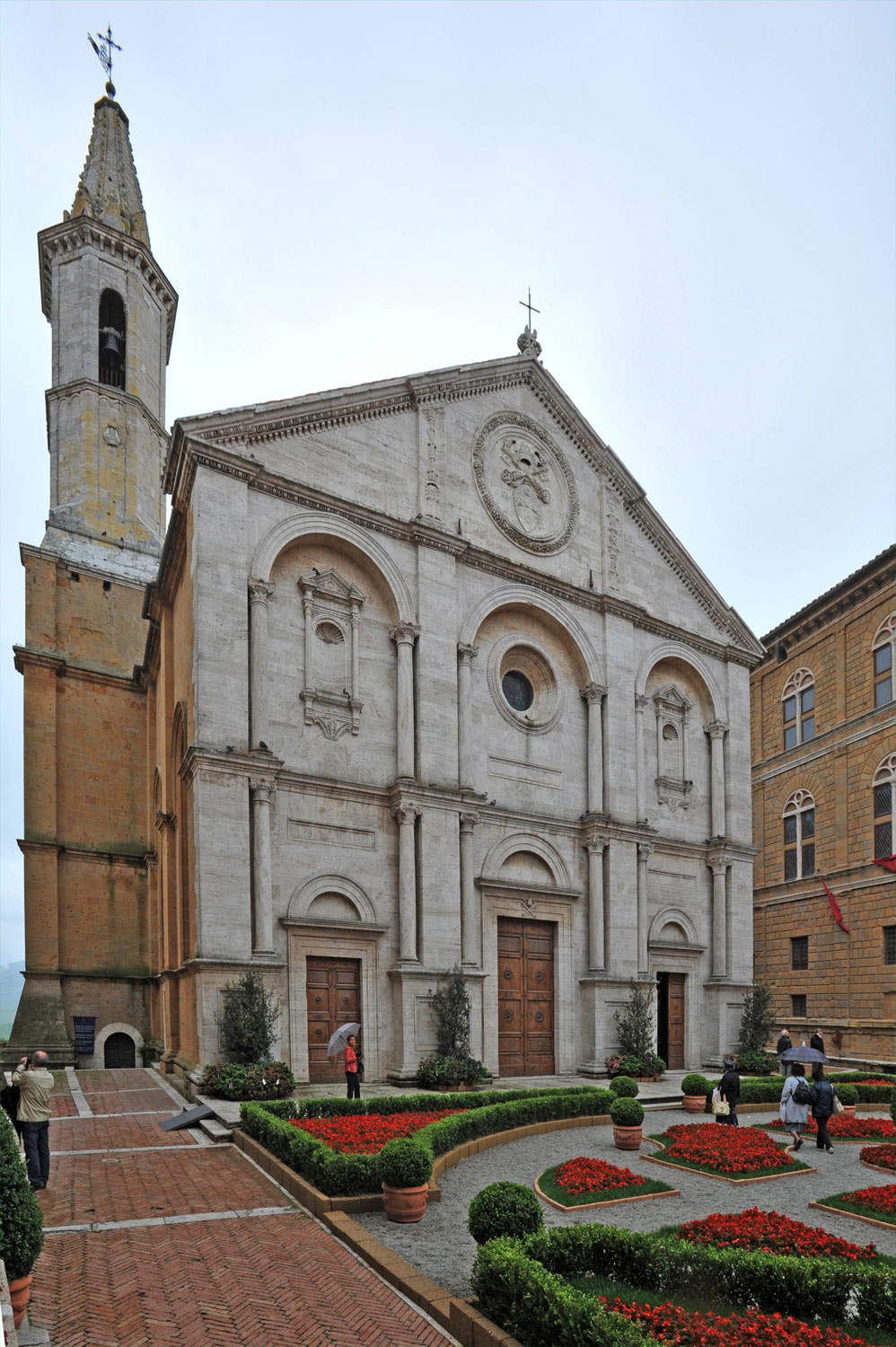
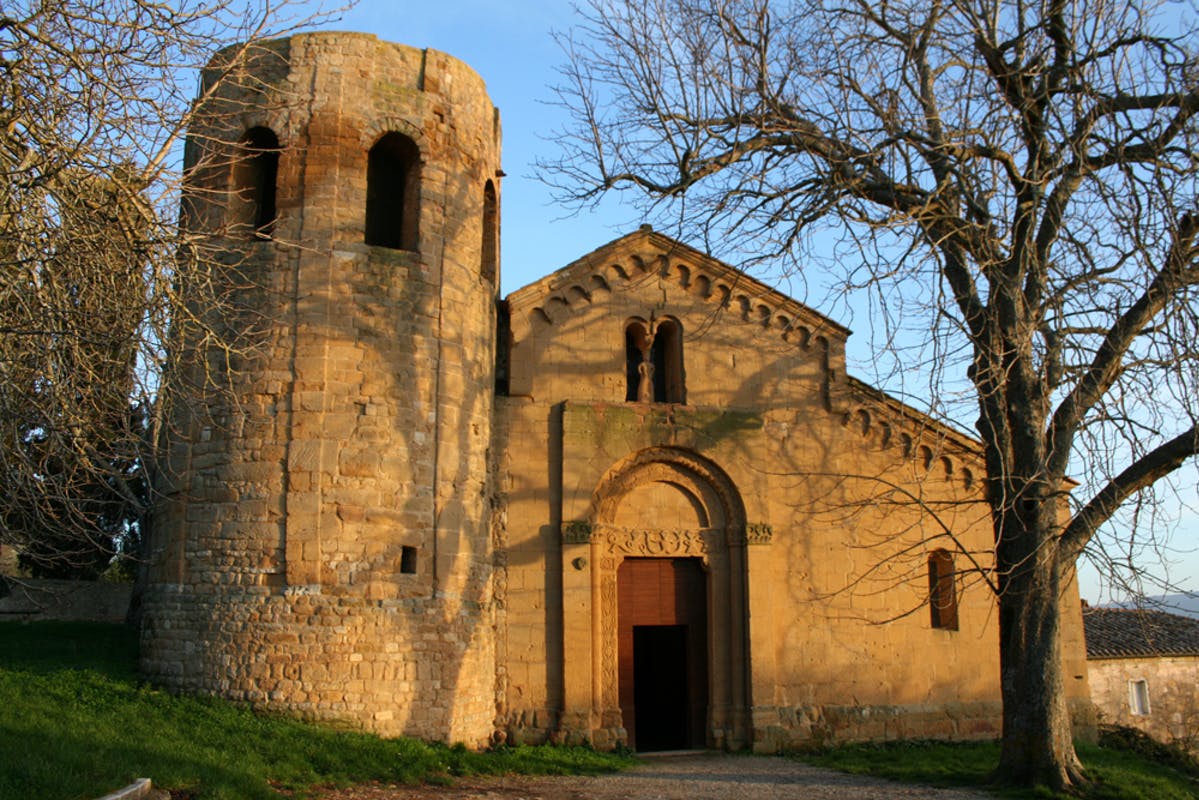
In addition to this altarpiece, a tablet with the Death and Resurrection of a Monk, from the same period, is kept here. Coming from the monastery of Sant’Anna in Camprena, the tablet is part of a predella and narrates the episode from the life of St. Benedict who resurrected a monk killed by the devil. Other works preserved here include Pietro Lorenzetti’s tender Madonna and Child from Monticchiello (the nearby village where the tradition of the Teatro Povero is renewed every summer), St. Leonard (1415-1425) and St. Regulus (1430-1435) by Domenico di Niccolò “dei cori” in carved and painted wood. Then there is the cope of Pius II, of English manufacture, datable to the first half of the 14th century, made with theopus anglicanum embroidery technique with depictions of the life of the Virgin, St. Margaret of Antioch and St. Catherine of Alexandria, which according to tradition was given to the pope by Thomas Paleologus; the cope is a precious artifact completely embroidered in polychrome silks and gilded silver thread on the bottom and originally embellished with pearls applied perhaps along the edges and in various ornamental parts, mostly on the Gothic arches. In addition to the latter, one can see enamel tiles of Florentine manufacture from the second half of the 15th century that were applied to the papal mitre of Pius II, the lampas chasuble with a red background, and a series of figured lampas borders with scenes of religious subjects.
Opposite is Piccolomini Palace with its hanging garden, the first of the Renaissance: built of sandstone and travertine to a design by Bernardo Rossellino and modeled after Palazzo Rucellai in Florence, from the loggia one can admire a magnificent panorama of the Val d’Orcia and Mount Amiata while on the second floor is the noble apartment with its various rooms and library.
The cathedral, dedicated to Maria Assunta, has a tripartite facade with a gabled roof; it has an interior with three naves, of equal height following the example of the churches he had seen in Austria, divided by large pillars and chapels. Pius II probably oversaw its decorative apparatus: five large altarpieces made by the most important Sienese artists of the time, namely theAssumption of the Madonna between Saints Agatha, Pius, Callisto and Catherine of Siena by Vecchietta; the Madonna and Child between Saints Jerome, Augustine, Nicholas and Martin; and the Madonna and Child between Saints Catherine of Alexandria, Matthew, Bartholomew and Lucy by Matteo di Giovanni; the Madonna Enthroned with Child and Saints Mary Magdalene, Philip, James and Anne by Sano di Pietro; and the Madonna and Child among angels and Saints Bernardine, Anthony Abbot, Francis and Sabina by Giovanni di Paolo.
Not far from the town, descending from behind the cathedral, it is possible to reach the ancient parish church of Corsignano with its cylindrical bell tower and typical pre-Romanesque Lombard-Ravenna facade, which is rare in Tuscany. Also in the surroundings of Pienza is the aforementioned Spedaletto, a fortified village south of the city that was born as a shelter for pilgrims and wayfarers traveling along the Francigena; it was a place of passage for illustrious guests, even Pius II stopped there in 1460, who intended to promulgate a bull in favor of the hospital to endow it with privileges. And the aforementioned monastery of Sant’Anna in Camprena founded by the blessed Bernardo Tolomei in the early 14th century: inside it one can admire the frescoes completed in 1503 in the refectory by the painter Antonio Bazzi known as Sodoma (Vercelli, 1477 - Siena, 1549), the artist’s first Tuscan work done just before the famous frescoes in the abbey of Monteoliveto Maggiore.
This concludes an ideal itinerary that from Pienza, the town he designed, to the nearest surroundings follows the traces of a sui generis pope, a lover of the arts and letters, so much so that he based his existence on them and for this reason remembered among the most important humanists of the 15th century.
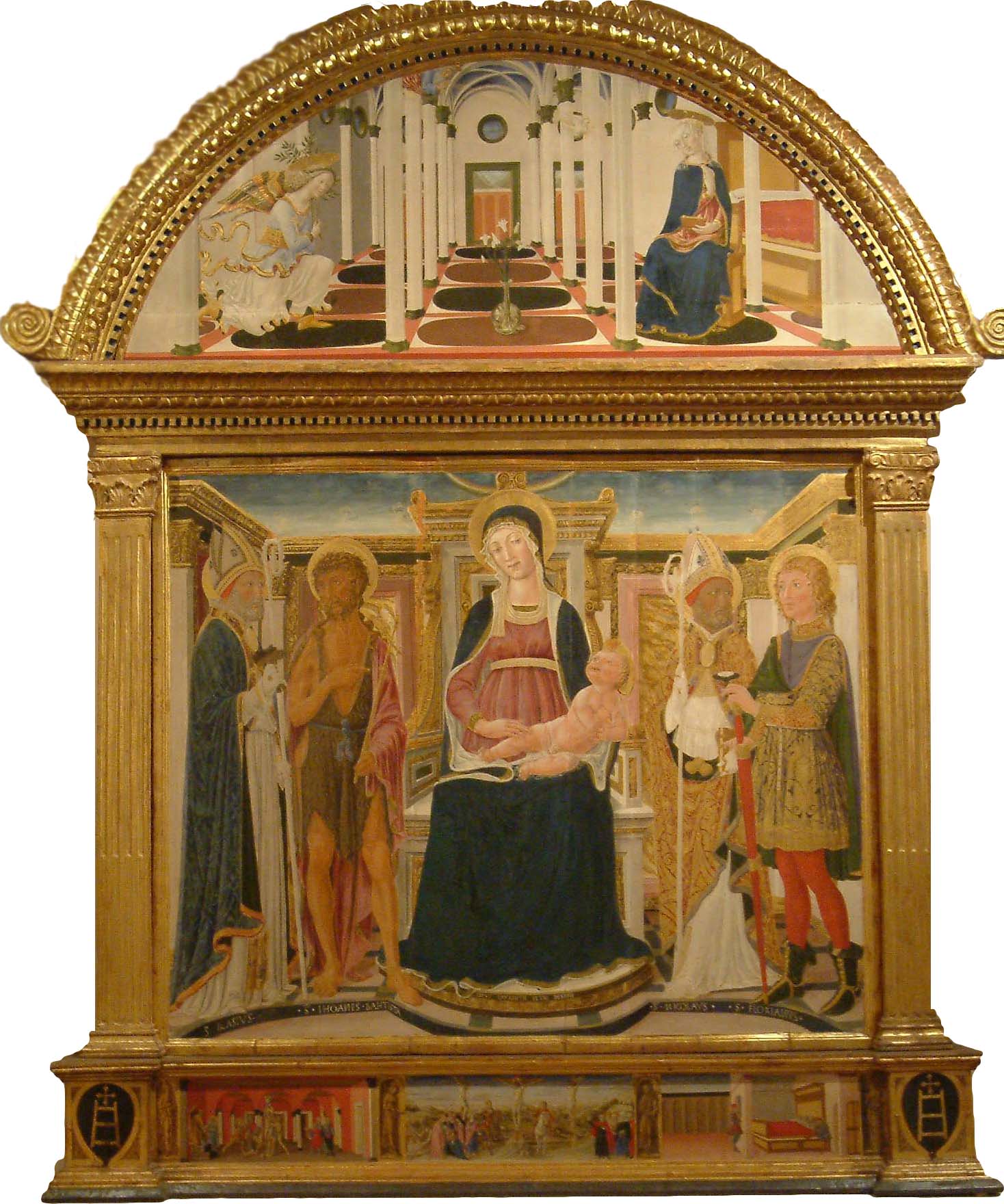
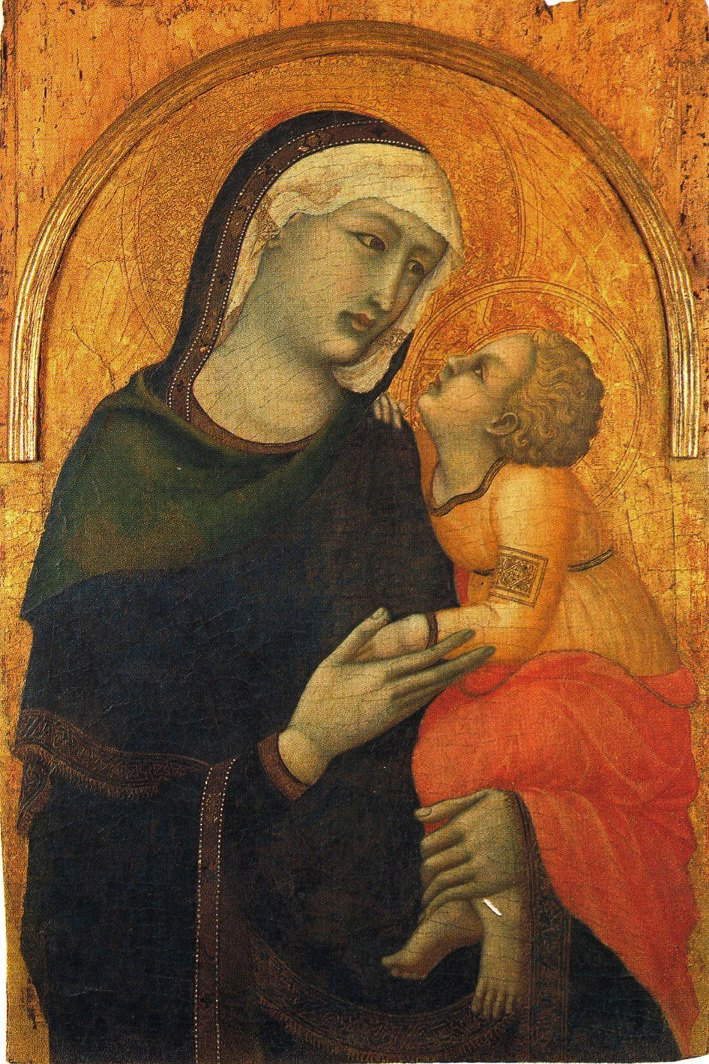
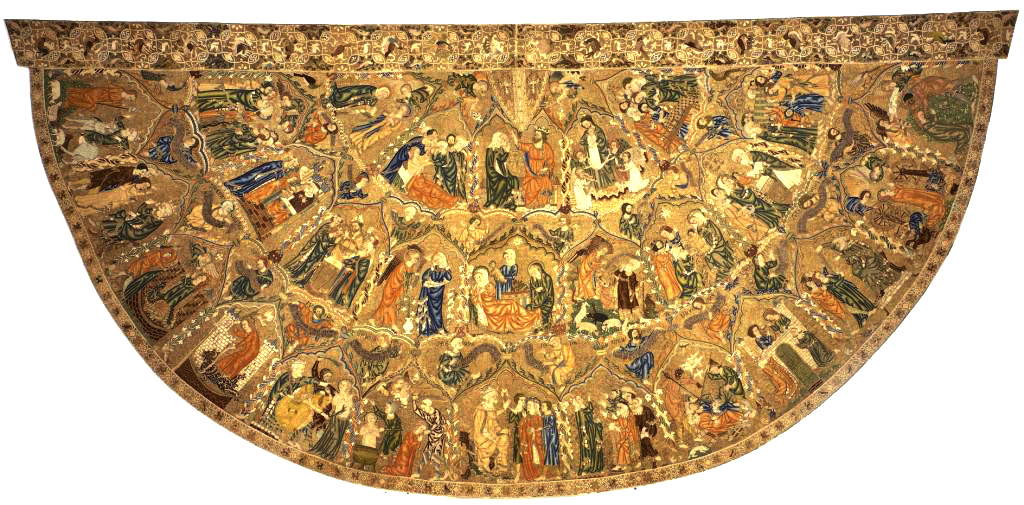
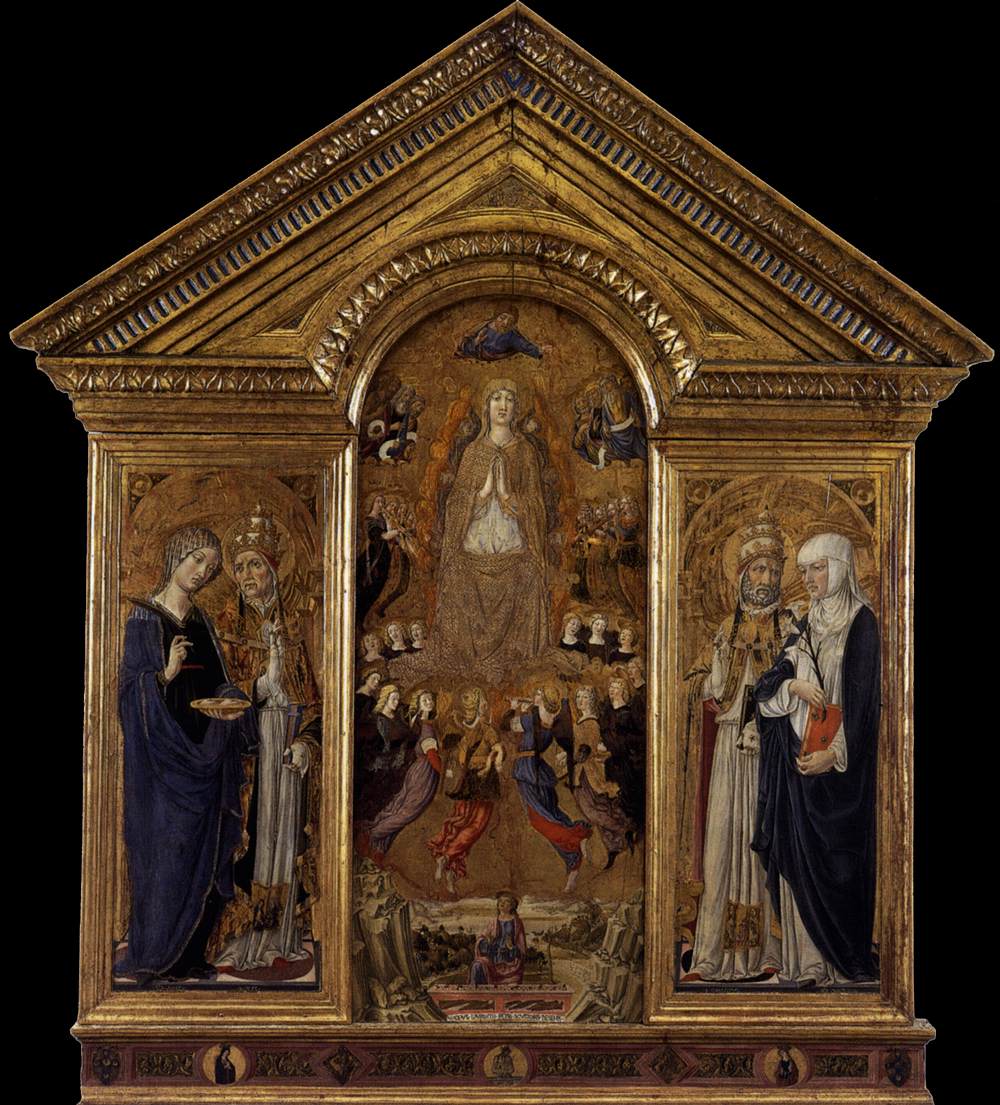
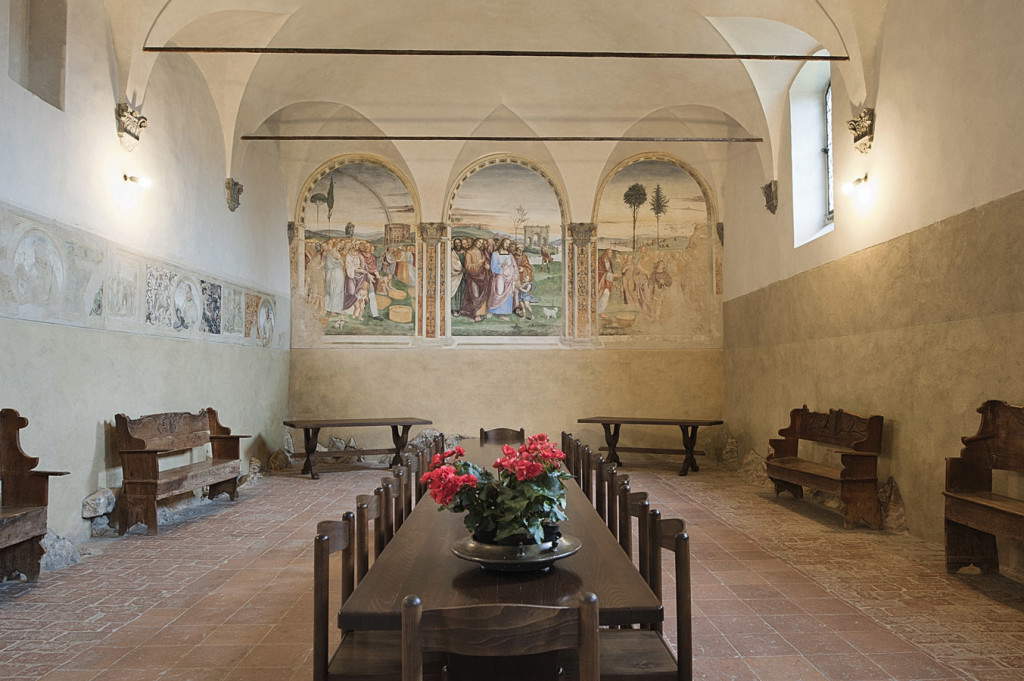
 |
| An itinerary in Val d'Orcia in the footsteps of Pope Pius II, great humanist of the 15th century |
Warning: the translation into English of the original Italian article was created using automatic tools. We undertake to review all articles, but we do not guarantee the total absence of inaccuracies in the translation due to the program. You can find the original by clicking on the ITA button. If you find any mistake,please contact us.